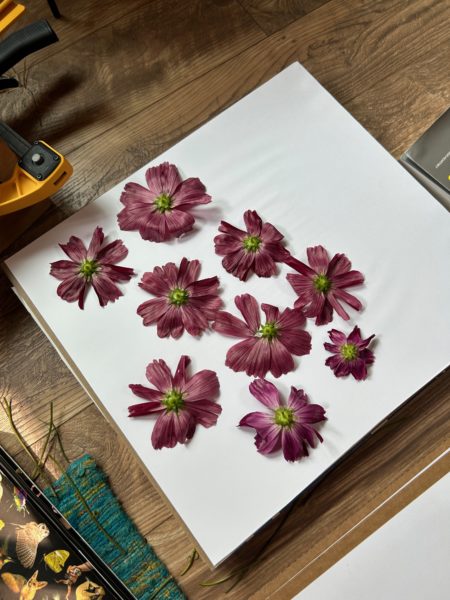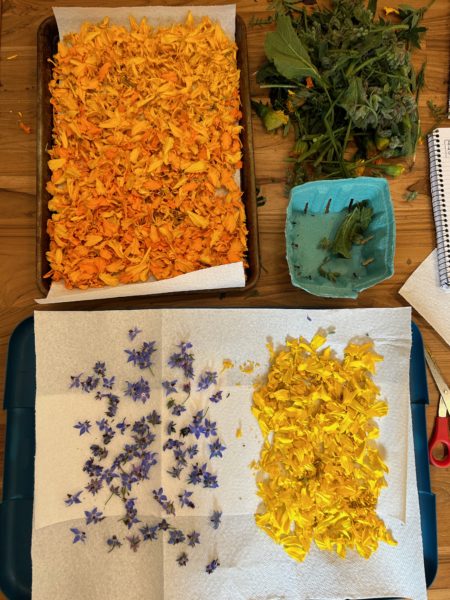BODY + LAND
I seek to be in a relationship with the land. I listen, tend, wait, notice, weed, harvest, give thanks. Cultivating the land, building a relationship so that we may be kin, so that I may seek understanding, permission, being known, feeling a deep sense of belonging—this is not an intellectual pursuit. It is through the body and its presence, actions, and senses that I come to know and engage with the garden and its land.
Time spent in the garden. The body is engaged in the physical movements and actions of tending, of loving, of responding. Is this Kimmerer’s reciprocity, I ask myself? I think so. But it seems I am waiting for something. Permission, maybe. Or forgiveness. Is this, can this be—the body’s back and forth loving and grieving of the garden— a version of a land acknowledgement? It is a quiet, internal prayer, without words. These are the ancestral lands of the Poquonook, Sicaog, Tunxis, and Massacoes. This was also the land of my children’s white European ancestors.
I am here now. Tending, pulling weeds, harvesting sweet peas.
https://drive.google.com/drive/folders/1p9Ty7pz9iT4TPcuopCBTbPQuJXxcdZ83?usp=drive_link
SENSORIAL MAPPING
The garden envelops my body; I am immersed in a field of perceptual delights. How might I map my sensorial experience of the garden, the smells, tastes, textures, and sights—and how might these convey a feeling, a season, a record of a complex ever-changing ecosystem, an artifact documenting my attempt to see and be seen?
At first the senses all mix together; in my process I pull them apart and then put them back together. Ecologist and philosopher, David Abrams, writes in The Spell of the Sensuous, “Our primordial preconceptual experience…is inherently synesthetic. The intertwining of sensory modalities seems unusual to us only in the extent that we have become estranged from our direct experience and hence from our primordial contact with the entities and elements that surround us.” How might I reconnect with a synesthetic perception of the world?
It takes patience to sit with each sense, to listen/smell/look/taste/touch deeply, and then interpret and record. Each time I improve, but it seems to be an unlearning of sorts, as if residing in my body is unfamiliar. Sometimes it’s the sound of the birds that become black ink streaks. Other times it’s the smell of the proximate tomato leaves that will later become green transparent ink blots. I consider, what shape and color do I see when I hear the harvesting of a neighbor? Or the movement of the bees? It’s a practice in reserving judgment, slowing down the urge to edit, just being with, and training myself to mix up the senses.
Back in the studio I reconstruct the moment and stitch together the isolated senses. Moving back and forth from my notebook, to the computer, to the printmaking table, I layer and collage a conceptual and synesthetic map that acts as a portal to a place and time.
ON AESTHETICS
“Instead of ‘any language goes,’ how might the viewer experience something more like, ‘Oh, I see, this is the language.’ – Peter
“What is your personal calligraphic gesture?” – from Ben Sloat’s Pecha Kucha talk
Jessica Hong: “What interests you aesthetically?”
Brooke: “I’m most interested in the contrast between the plant’s organic and uncontrollable aesthetic, and my own bold and graphic design tendencies.” (as seen in the flags)
I am left wondering, what is my language? I most certainly have a gesture. A lover of drawing, I make quick ink drawings that capture the shape and essence of a plant or person, or slower contour drawings that give life to shape and detail. The shapes of leaves bring me comfort. The density of the garden mimicked in ugly and beautiful layers on top of one another.
I am also a printmaker with a playful practice and envision making large complex images with a variety of processes and media. I’m very inspired by Sarah Sze’s piece “Fifth Season” which for me feels like an example of visual thinking on a large scale, as well as Julie Mehretu’s conceptual maps of economic systems. In his introductory welcome Ben Sloat shared Carl Jung’s quote with us: “Often the hands will solve a mystery that the intellect has struggled in vain.” I feel I could do this through an engagement of my drawing and printmaking. I’m thinking of what it means to develop my own aesthetic, leveraging the collagraph prints and kinship with plants. I’m also thinking about the positive and helpful feedback on my conceptual maps of the garden and I want to explore and push these more. These are meant to create an experience of sensing the garden, being there, and documenting my relationship to it. Maybe they’re part digital image and part screenprint. Maybe they’re all different kinds of printmaking, or with drawing embedded as well. I want them to retain a sense of time, like they were quick field studies to document a moment, and not overly processed, not overly curated for the viewer or the frame. How might I have the process embedded in the product? Peter says, “What’s the honest yield from the process of making?” There might be a relationship and density between linoleum/wood carving, screenprinting, collagraph, hand drawing, painting, digital reproductions or scientific illustration of plant specimens. How might I experiment first on a small scale?
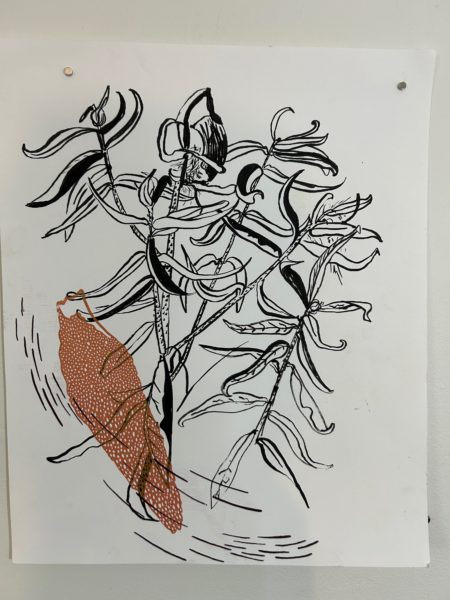
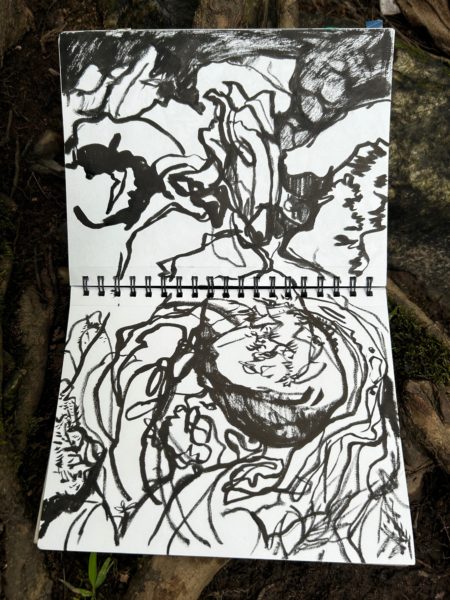
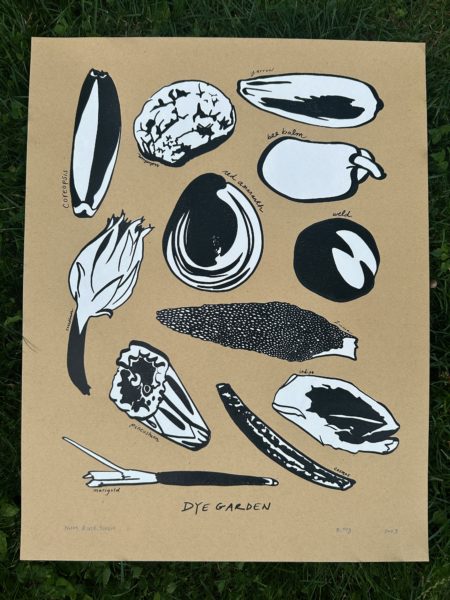



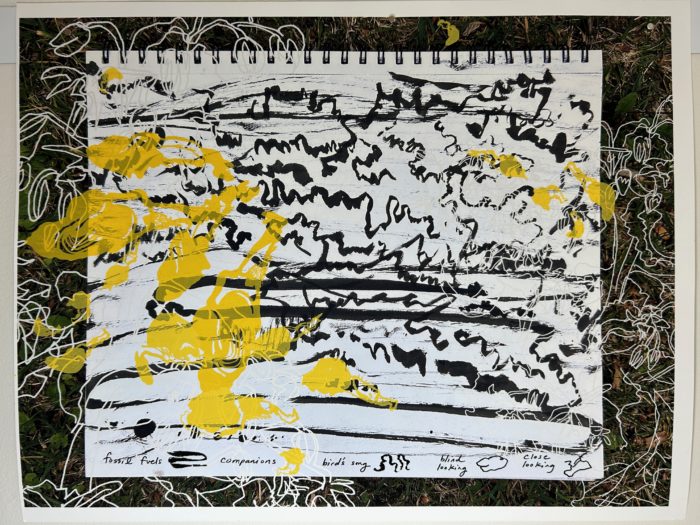

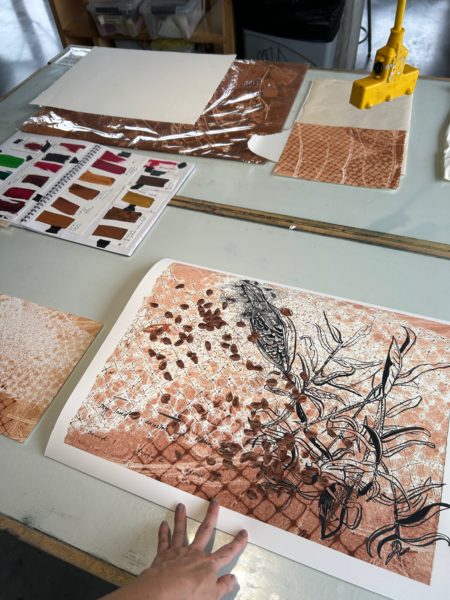

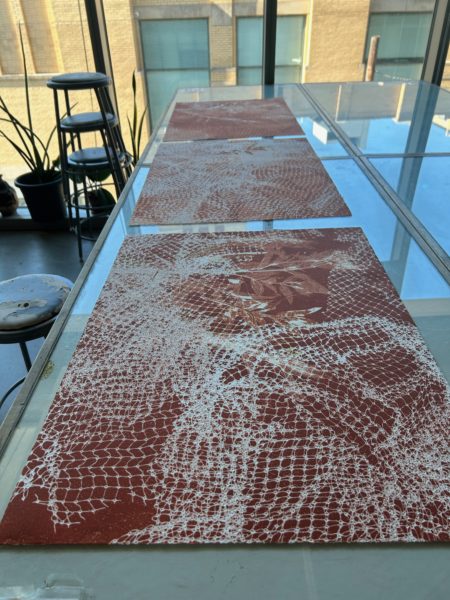
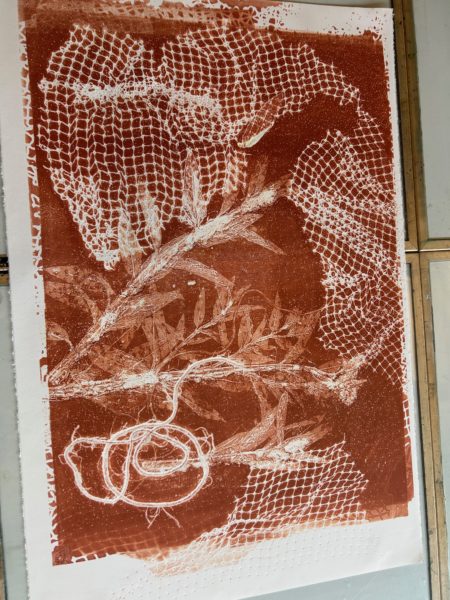
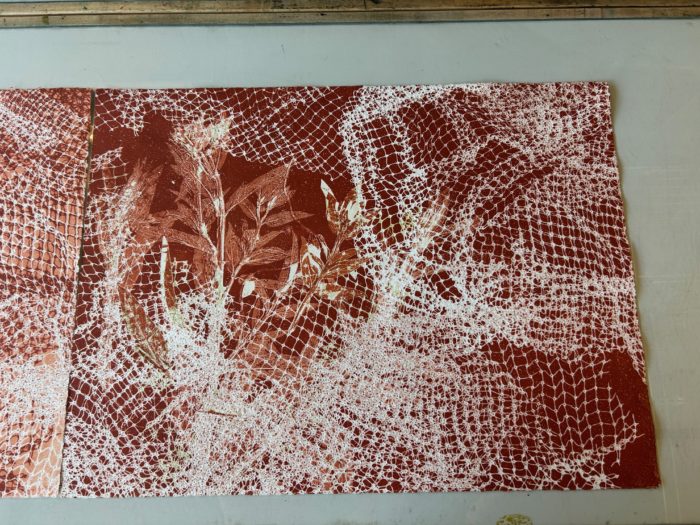


MATERIALS EXPLORATIONS
- Dying paper with fresh indigo leaves and fresh red amaranth; some paper was mordanted with alum
- Making red amaranth ink
- printing plants on printing press (with no ink)
Preserving the Garden
- Drying flowers (for natural ink and/or dye making)
- Pressing plants (perhaps to make an herbarium, or to print with)
